It’s only two days since I enjoyed walking in a Nelson pine forest, but now I find myself making unfavourable comparisons. I’m walking in the Brook Waimarama Sanctuary, just a couple of kilometres from the Coppermine Trail and yet a world apart. Here, the forest is protected by a predator fence and the birds are thriving. Everywhere I walk, I can hear the song of the korimako. I’ve even heard the call of the ngirungiru, or South Island tomtit. It’s more than 20 years since I last heard one.
Even in areas where the forest is regenerating rather than mature, it feels special. The forest touches something inside me, opening my heart and enlivening my senses. I’m refreshed by the chill air on a south-facing slope which never sees the winter sun. I inhale the aroma of damp earth and hear the distant stream. I notice the delicate leaves of our native chickweed, the smooth lobes of a lichen, the flaking bark of kānuka, the black velvet trunk of a beech tree.
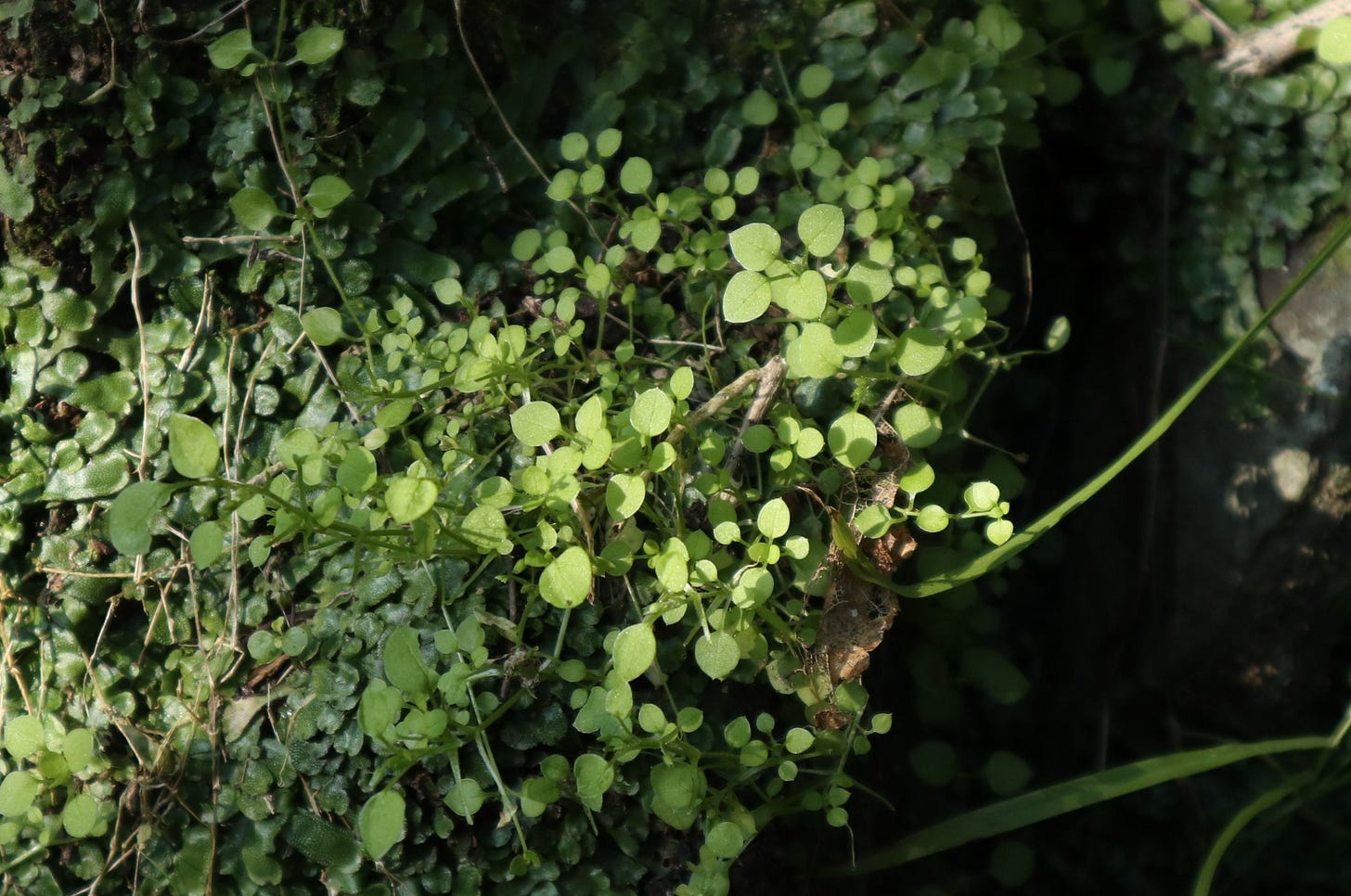
One corner of my mind, however, has not immersed itself in the forest’s sensory feast. It’s thinking of the pine forest. The sunlight shining through the pine needles was exquisite. I don’t think I’ve ever observed such beauty in radiata pine. But it still didn’t make me feel the way our native forest does. Why not? Why do I feel such a profound connection with these forests? Why don’t I feel the same in a pine plantation?
As I walk, I run through possibilities in my mind. Some, I can rule out immediately. I have no ancestral connection to this land or to these forests. On my adoptive family’s side, we’ve been in New Zealand for two to four generations, depending on the branch of the family. On my birth family’s side, there’s no connection with New Zealand at all, although since they are Australian, perhaps I can credit them with my love of gum trees. Nor does a religious or spiritual explanation make sense to me. Such an approach to the natural world was not part of the religion I was brought up in and, as an adult, I don’t tend to view the world in a religious or spiritual way.
I don’t think that the connection I feel with native forest can be linked to childhood experiences of the forest either. I was certainly a child who was interested in nature and observing the natural world. I have a detailed memory of the plants growing in the garden of my family home, but I didn’t spend a lot of time in the forest. I enjoyed visiting some of the small reserves near where I lived, but I don’t think I saw a larger area of forest until I was a teenager, and attended a couple of camps with the Hamilton Junior Naturalists.
A more plausible explanation is that it’s something I have learned through my university education and my work in conservation. I’ve learned to identify native plants. I’ve studied how forests work – the structure, the movement of water and carbon, the progression from one kind of plant to another. I’ve walked straight lines through dense vegetation, trying to follow a compass bearing and dragging a measuring tape behind me. I’ve looked up at the sky and tried to estimate the density of the canopy. I’ve crouched on the ground, counting seedlings within a 1 x 1 metre frame. I’ve monitored areas after weed control, to see whether it has made a difference.
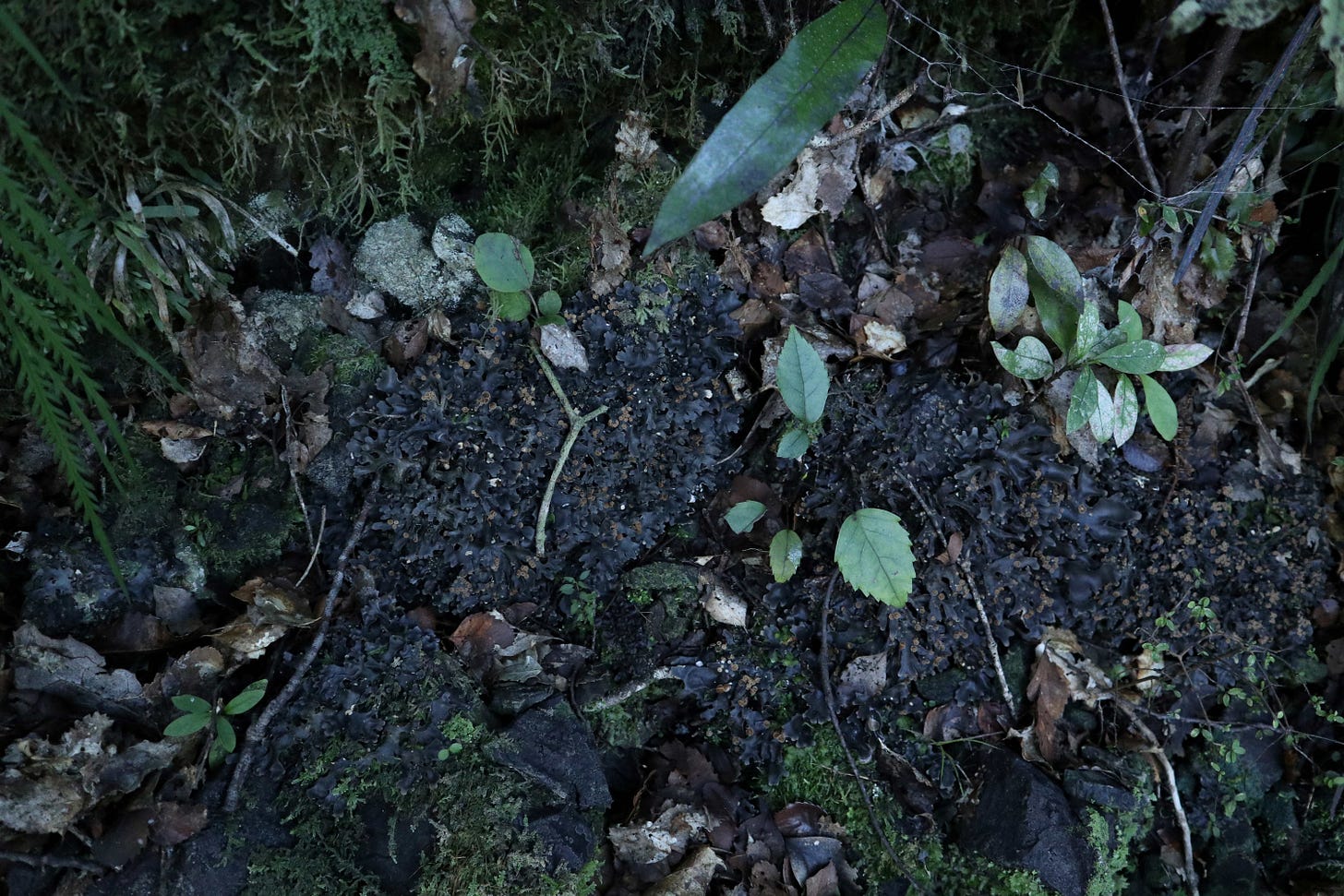
I didn’t only learn facts, though. I learned values. At university, we didn’t study pine forest, we studied native forests – the kauri forests of the north, the beech forests of the central plateau, the diverse rainforests which once blanketed most of our lowlands. These were the forests I learned to value. I learned about the impact of possums, deer, goats, rats and stoats, introduced mammals to which our plants and animals weren’t adapted. I saw areas invaded by introduced plants which had left behind the pests and diseases which kept them in balance where they are native. When I worked in conservation, I understood that our goal was more than ensuring the survival of individual native plants and animals. This could be done just as well in zoos and gardens, in theory at least. Our goal was to ensure the survival, as much as possible, of ecosystems – the network of interactions between plants and animals which make up a forest, or a shrubland or some other environment.
As I walked along the forest track in the Brook Waimarama Sanctuary, I wondered whether the lessons I had learned, both the facts and the values, had somehow turned into emotion. When a forest felt right to me, perhaps it was simply my awareness that the forest matched what I’d learned it should be.
It was a troubling thought. I didn’t like the idea that what felt like a profound emotional connection was something I’d been taught. My love of the forest felt cheapened.
I wondered what someone who’d had none of that education would see and feel. What if I didn’t know what any of the plants were? What if I didn’t know whether they were native or introduced? What if I knew nothing but what I could observe with my own eyes? What if I had only my senses to guide me? Would I still feel that this forest was special, in a way that the pine forest I’d been in two days before was not?
I began to pay closer attention. I tried to imagine I knew nothing. And then I understood.
Even if I knew nothing about the plants, I would still be able to see a crucial difference between the forest I saw in the Brook Waimarama Sanctuary and the pine forest near the Tantragee Saddle. Whether I’m looking at the forest as a whole, or peering closely at the ground, the pine forest is much simpler than the native forest. There’s a single canopy tree, and all are the same age. There are other plants growing beneath, but there aren’t many different species. The ground is a carpet of pine needles and not much else. On the tree trunks, branches and twigs, there isn’t much else growing, barely even a crust of lichen. There’s no dead wood, no ancient rotting logs sprouting tiny toadstools and bracket fungi, upholstered in shades of green from a myriad of mosses.
The difference I’m seeing is due to the forest’s age and size. I remember the way I felt when I walked in the Pureora Forest, a forest which is 1800 years old. When hardy pioneer plants, perhaps mānuka or tutu, sprouted in the scorched earth left after the eruption of Lake Taupō, there were no people in New Zealand. The largest eagle ever to have flown soared in the skies and the tallest bird trod the land. I could not say that the forest I saw was untouched, because so many species were missing – birds, insects, reptiles, frogs and probably plants and fungi. But there were still massive trees, many hundreds of years old. And I could still see the complex structure and diversity of an old forest.
Pureora is notable because the ancient trees still stand, but some of our forests are much older, many thousands, even tens of thousands of years old. I don’t know how long some areas of New Zealand have had forest, but there must be places where the forest survived during the last ice age, which ended more than 10,000 years ago. This is not to say that the individual trees are so old, but the forest is so much more than the trees. It’s the soil, which builds up with glacial slowness and which is washed away in the first storm if the forest is removed. It’s the mycorrhizal fungi which grow enmeshed with the roots of the plants, to mutual benefit. It’s the layering of fallen leaves, branches and trunks which create numerous micro-environments and support the array of seedlings, ferns, mosses and other small plants on the forest floor. It’s the patterns and colours formed by lichens growing on trunks, branches and twigs. It’s the delicate shapes of plants which only survive in the shade and humidity of a forest’s interior. All of these take time to develop.
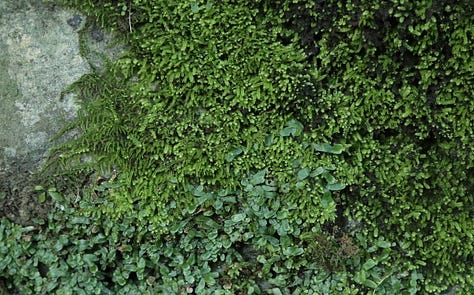
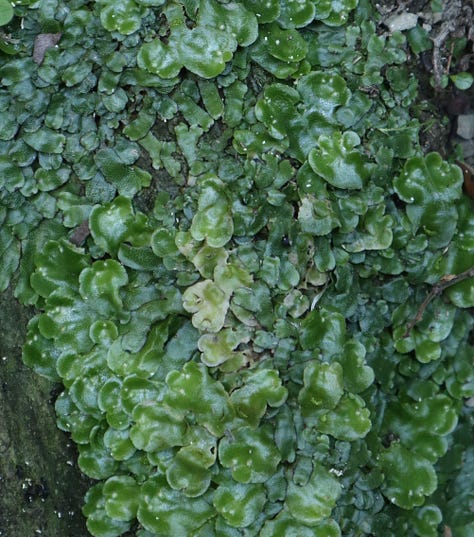
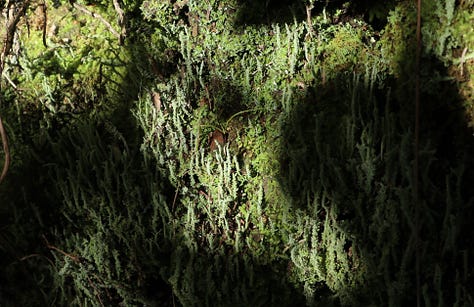
If it’s cleared or burned, or if deer, goats, possums, cattle and sheep are allowed to eat and trample it bare, the forest loses its essential structure. If it’s fragmented, the more delicate plants shrivel away. That’s why most of the forests around Wellington don’t feel quite right. They’re too new or too fragmented, and so are too simple. Some parts of the Brook Waimarama Sanctuary forest are regenerating too, but, as in Wellington, enough has survived to allow recovery. If we look after them, these areas will one day feel like real forest again.
Now I am focused on simply noticing pattern, shape, colour and texture, with no attempt to identify what I’m looking at, I see complexity and diversity everywhere. As I run my fingers over a tree trunk or a mossy stone and breathe the humid air, I understand that I’m connected to the centuries of growth and decay. I’m immersed in an enviroment both dynamic and enduring. This is what I feel in a forest.





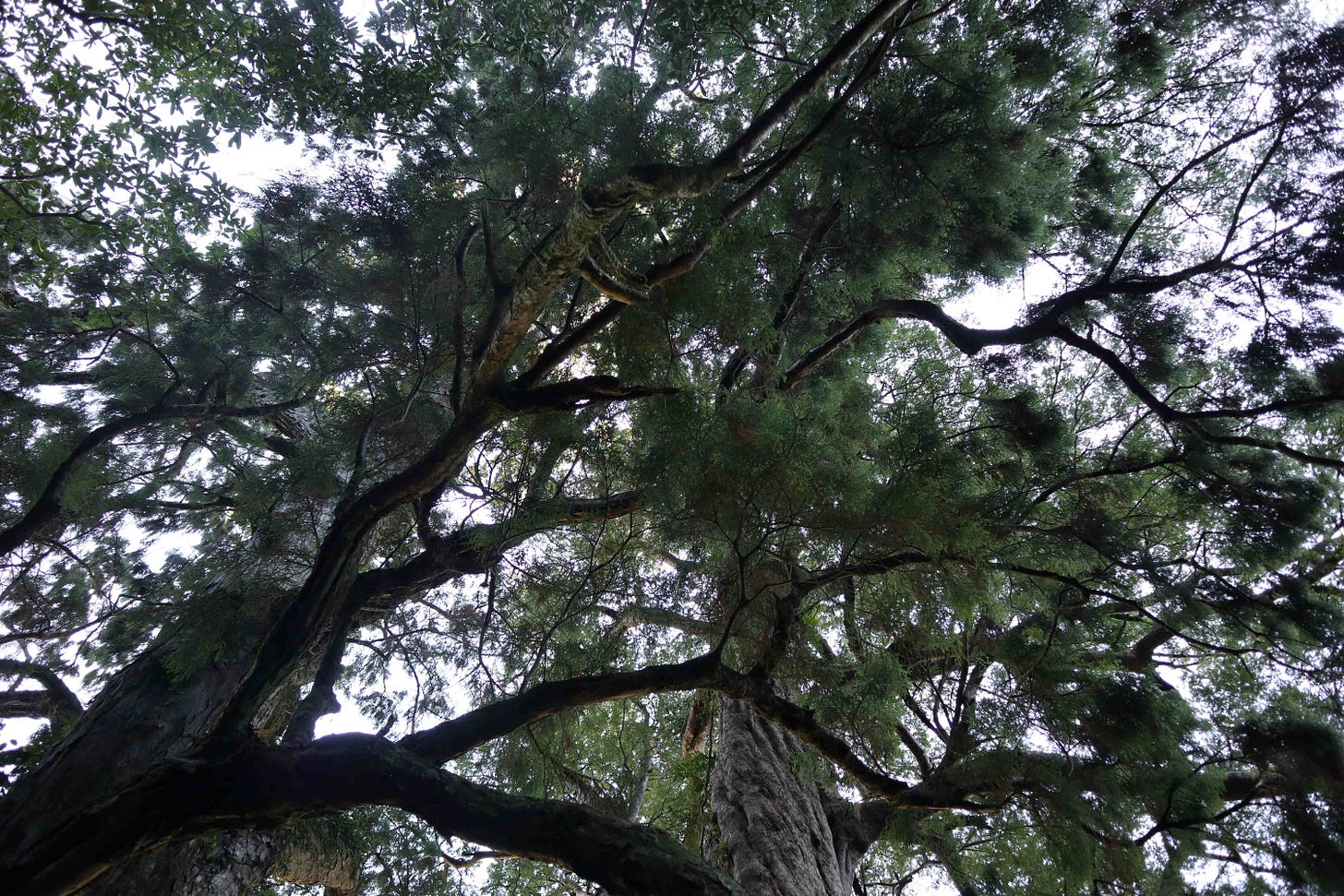
Do you ever wonder if there are unseen, unheard signals, that bind you invisibly to the bush? Now I’ve read “Finding the Mothertree” or “Entangled Life”, I wonder if our bodies, living in Aotearoa, recognize air borne signals released by plants.
Tau rē Melanie! Love your forest knowledge - and thankyou for sharing it so generously!